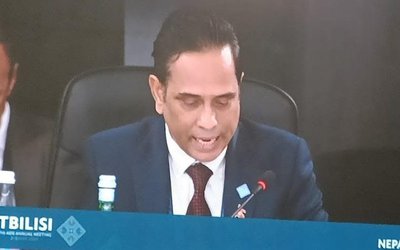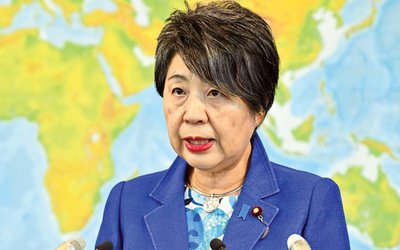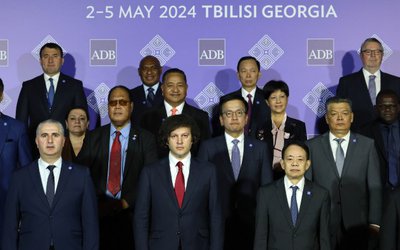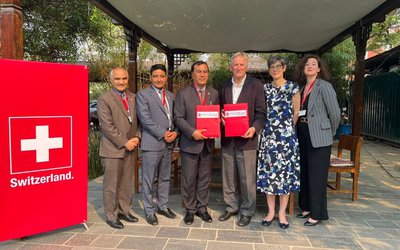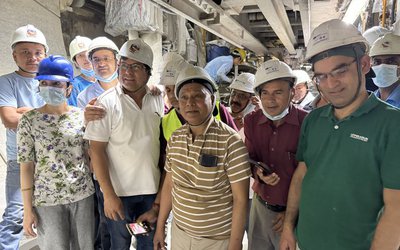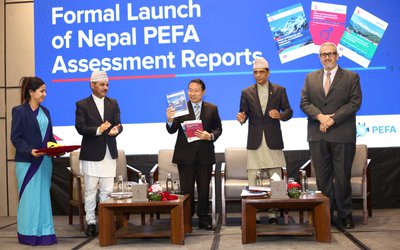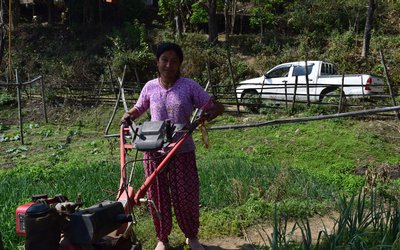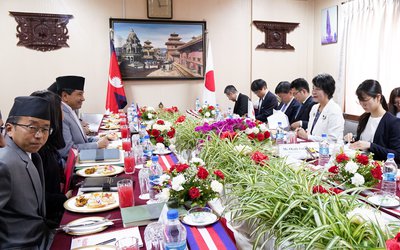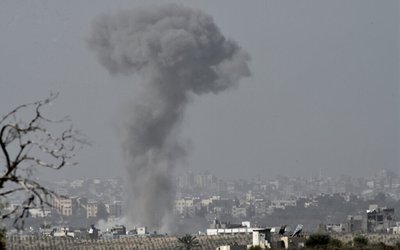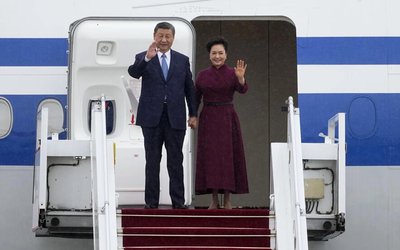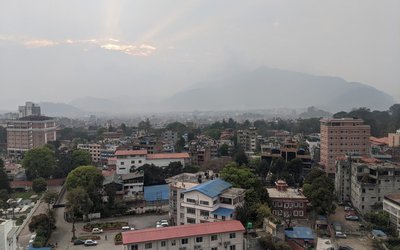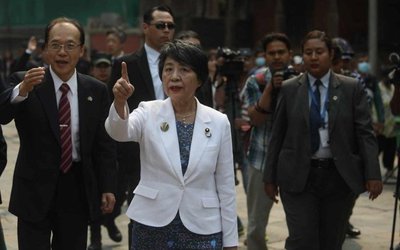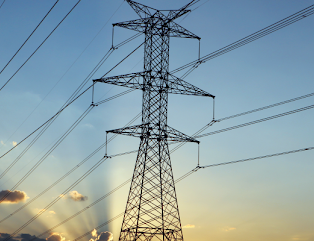
Although Nepal Electricity Authority (NEA) ended load shedding hours five years ago, there are reports of frequent disruptions in power supply recently. The undeclared power cut goes for hours on days.
As No Light Section, a unit responsible to address grievances of consumers, does not receive the phone call, the consumers have no option other than to live in the darkness.
On media outlets from newspapers to social media, public comments and complaints point out frequent and regular power cuts, yet no one would be there to address the issue.
Known for his action and determination to implement his commitment, MD Ghising, who had made the virtually impossible task of ending the severe loadshedding, has set a mission to provide quality and uninterrupted power supply.
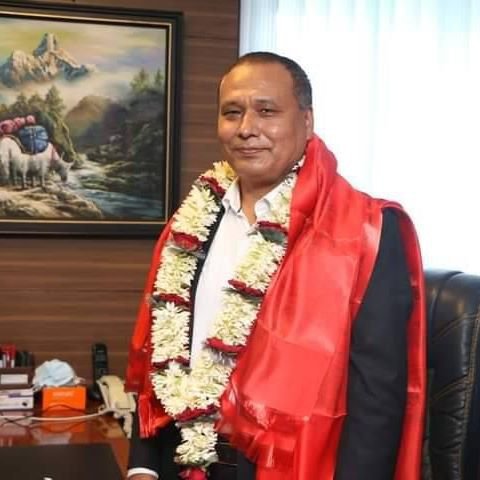
Knowing where the crisis and problem are, MD Ghising has initiated his efforts calling a meeting of all the heads of seven different provinces and Deputy Executive Director of Consumer and Distribution Directorate.
Responding to increasing consumer complaints related to the frequent disruptions of electricity supply and no response from No Light Division of NEA, MD Ghising has taken the initiative to ensure regular, reliable and quality supply of electricity, controlling leakage of electricity and maintaining financial discipline within NEA.
Despite officially ending load shedding, the frequency of electricity interruption has recently increased in many parts of Nepal. MD Ghising’s meeting with higher officials discussed frequent power cuts without notice, lack of meters for connections and non-responsive No Light Division,
The virtual meeting has decided to take immediate steps to improve the quality of electricity supply. In his address to the heads of all 7 provinces and deputy directors of Distribution and Consumer Directorate, MD Ghising directed them to take all necessary steps to provide quality electricity and address the public concern by taking stern actions to discipline the organization.
“Along with me, the Minister for Energy, Water Resources and Irrigation has also been receiving the complaints regarding frequent electricity cuts and non-responsive No Light Division,” said MD Ghising. “The present need is to immediately address all those concerns, taking stern steps. Our efforts must be to supply quality and regular electricity to consumers.”
He also said that there is the need to maintain discipline within the organization and take necessary steps to control the leakage with the support of and in coordination from local levels and district administrations.
He also said that there is the need to provide three phase meters to increase the demand of electricity among the consumers. "There is the need to strengthen transmission and distribution infrastructure, starting the construction work.”
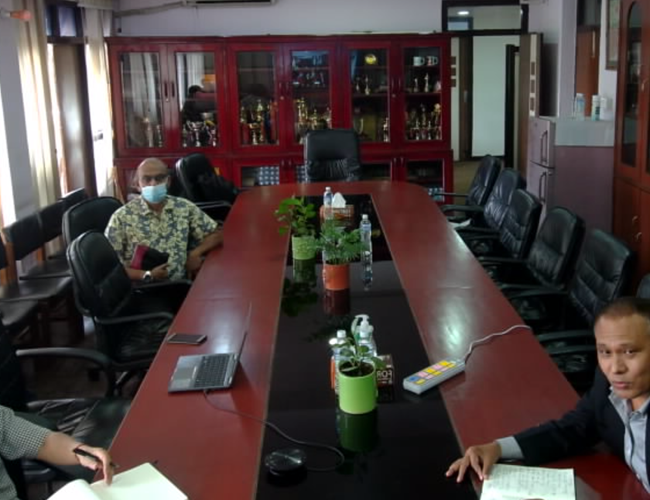
MD Ghising directed all concerned officials to take necessary steps to complete the projects in time and take actions against those contractors who do not complete projects in stipulated time.
He also directed them to use all old equipment from store to control expenditure and discourage purchase of new projects. He also said that NEA will take necessary steps to maintain financial discipline not allowing the purchase of the things directly.
MD Ghising also directed concerned NEA’s officials to collaborate in coordination with local levels to implement NEA’s announcement to improve beautification of city. NEA has recently announced to implement a campaign Brighter and Clean city.
MD Ghising has directed officials to install smart lights in main roads, historical, cultural heritage sites and World Heritage Sites. He has also directed to remove unused polls and wires from the city under beautification programs working to take underground the remaining cables.
Deputy Executive Director of Distribution and Consumer Directorate Manoj Silwal also directed all heads of provinces to work towards controlling the electricity leakage. Deputy Executive Director Silwal also directed them to address frequent power interruption and focus on providing quality electricity to the consumers.
Improve Transmission And Distribution Systems
Minister for Energy, Water Resources and Irrigation Pampha Bhusal said that the time is ripe to give up the foreign gas and connect with domestic electricity. Addressing the 36th annual function of Nepal Electricity Authority, Minister Bhusal said that there will be different tariffs for different sectors to increase the consumption of electricity.
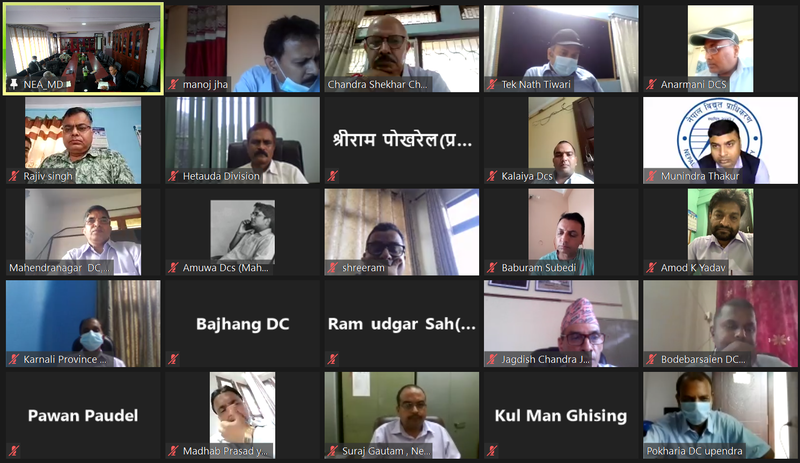
Minister Bhusal, who is also the chairperson of the NEA board, said that NEA will also implement the working plan to increase the domestic consumption keeping in mind the possible wastes of energy in rainy season.
She said that the decision has already been taken to introduce different tariffs for winter and rainy seasons and there will be additional incentives to consumers who used more electricity. Minister Bhusal also said that there is the need to increase the import of electricity. She also directed NEA to intensify the efforts to complete the universal electrification before the targeted time. She also said that there is a need to expand distribution lines in the areas with irrigation facilities.
“Under Nepal’s Water, People’s Investment Program, 1060 MW Upper Arun, 450 MW Chainpur Seti, 100 MW Tamakoshi Fifth will be implemented. Similarly, 60 MW Upper Modi will be built under employees investment,” said the Minister.
Minister Bhusal said that the construction of 400 kV Butwal-Gorakhpur, Kerung (China)-Ratomati cross border transmission line and north south 400 kV Transmission line will be constructed to evacuate the electricity generated domestically.
She said that NEA has to work further to provide quality electricity to the consumers stressing the need to establish mechanism and enhancing the capacity of distribution centers. The Minister also directed officials to take necessary steps for automation in the distribution system and installation of smart meter throughout the country.
Secretary at the Ministry of Energy, Water Resource and Irrigation Devendra Karki said that learning from the experience of domestically built 456 MW Upper Tamakosi Project, there is the need to immediately start the construction of 1061 MW Upper Tamakosi Project.
Secretary Karki also stressed the need to improve and expand the transmission and distribution system to meet the demand of industrialists.
Managing Director of Nepal Electricity Authority Kul Man Ghising said that NEA will provide high quality service to the consumers turning electricity production and distribution system automatic.
MD Ghising said that there is the need to give high priority to expansion and strengthening of distribution system to increase the consumption of electricity. He said that there are many challenges to find the market for the electricity generated by Upper Tamakosi and other projects saying that the provision will be made to encourage consumption of more electricity in domestic market and export the surplus.
MD Ghising also said that there is the need to increase the domestic consumption of electricity which will have positive impacts on national economic progress and social development. “Thus, NEA will focus on the construction of infrastructure, rural electrification, supply for agriculture, irrigation and industrial sector as well as review of current tariff to encourage electric vehicles and induction heaters in households,” said MD Ghising.
Completion of 220 kV Kosi Corridor Transmission Line Project
For a coincidence, a project which had started in his first tenure was completed just a few days after Ghising began his second tenure as MD. Working hard and spending a lot of time to end the stalemate, MD Ghising had a very strong attachment with this strategically valuable transmission line. The first phase of construction of 220 kV Kosi Corridor Transmission line has concluded. Starting from Tumlingtar of Sankhuwasabha to reaching Inaruwa, the 106-km long 220 kV transmission line has 326 towers.
“After the completion of the project, it can pave the way to evacuate the over 2000 MW electricity from the proposed and ongoing hydro power projects that are under construction in Arun and Tamor rivers,” said MD Kul Man Ghising. The line will be charged in 33 KV.
Till the completion of 220 kV station in Inaruwa, the line will be charged to temporarily build 33 kV station to evacuate the electricity from Bhojpur, Sankuwasabha and Tehrathum.
This will end the problems faced by the IPP’s projects to evacuate electricity during rainy season. Following the completion of the transmission line, the Kosi corridor transmission line will be connected to 33 kV in Tirtire situated at Sankhuwasabha. The electricity will be brought to 33 kV line of Chatara. In absence of transmission line, power projects were unable to operate in their full capacity during the rainy seasons. Currently, there are various projects with generating capacity of 33 MW during the rainy season.
According to Rajan Dhakal, Project chief, the construction of three substations has already completed in Tumlingtar and Baneshwor in Sankhuwasabha and Bashantapur in Tehrathum district. He said that the project is able to complete the work addressing many obstructions with the support from all different stakeholders. Dhakal said that the project is able to create a record of completing a lengthy project in time.
Constructed with the financial support from Nepal Government, Nepal Electricity Authority and concessional loan from Exim Bank of India, the transmission line will evacuate the energy generated by the hydro power projects, which are under constructions in Bhojpur,Terahathum, Sankhuwasabha and Taplejung of Province 1, to national grid.
The transmission line will carry 516 MW of electricity generated by 28 different projects. NEA has already signed PPA with them. Under the first package, 220 kV double circuit Inaruwa, Basantapur-Baneshwor and Tumlingtar Transmission line has completed with an estimated cost of 30.75 million US dollars. Under the second package, the construction of 220 kV substations in Basantapur, Baneshwor and Tumlingtar has already completed with the cost of 20.53 million dollars.
The construction of 35-km 132 kV Basantapu-Dhungesanghu (Taplejung) transmission line is now underway with an aim to complete it by February 2022.
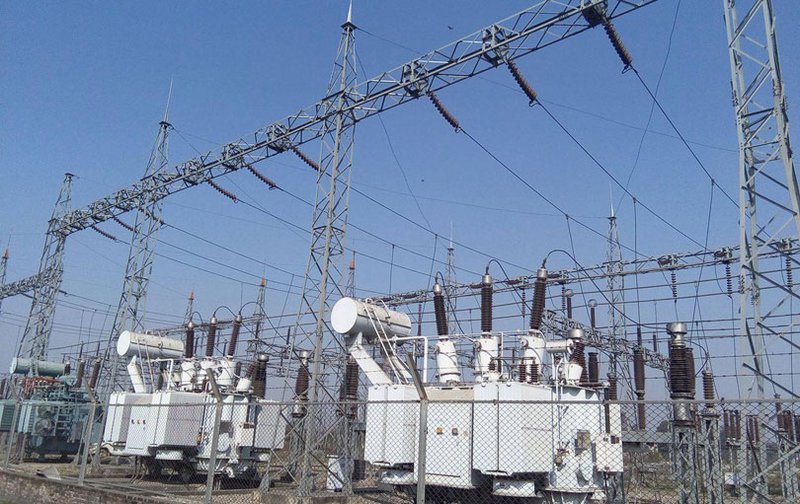
NEA’s Progress 2078
When MD Ghising completed his first teure, NEA was financially in a very healthy position with its profit margin of over 12 billion rupees. However, it is disappointing this year.
In terms of expansion of access to electricity, it has made certain progress: 90 percent population has access to electricity. Like in the past, access to electricity has increased in the country. During the period of a year, 7.37 percent new consumers were added, the number of consumers now reaching 4.5 million. The total number of consumers has reached to 5.8 million with 550000 consumers from community. In total, 90 percent of the population has access to electricity through grid system. Despite coronavirus pandemic, total electrification has completed in 32 districts including Kalikot and Jumla of Karnali district.
Electricity Production Declines, Import From India Increases
In the fiscal year 2077/78, NEA’s plant generated electricity worth of Rs. 2.81 billion 6.7 percent less than the fiscal year 2076-77. In fiscal year 2076-077, NEA generated electricity worth of Rs.3. 2 billion. Similarly, the production of electricity from PPA has increased by 8.36 percent compared to last year reaching Rs.3.24 billion. Private sector generated electricity worth of Rs. 2.99 billion in fiscal year 2076/77.
Nepal has imported electricity worth of Rs. 1.73 billion in the fiscal year 2076/77. However, NEA imported electricity from India worth of Rs.2.82 billion over 63.45 percent in this fiscal year due to increased demand and reduction of NEA’s production.
Last fiscal year, there was availability of electricity worth of Rs. 8.87 billion in the system which is 70.4 million units over that of fiscal year 2076/77.
Out of total electricity available in the system, 31.66 percent was of NEA, 31.85 percent private sector and 36.51 percent import from India. In the fiscal year 2077/78, 7.31 billion units of electricity were consumed compared to 52.90 billion units in 2076/77 fiscal year.
Electricity Leakage Increases
During the fiscal year 2077/78, leakage of electricity reached 17.18 percent which is 1.91 percent higher than the previous year. NEA blamed lack of programs, inadequate meter reading caused by COVID-19 pandemic, and other reasons for increased leakage.
Profits Decline
During the fiscal year 2077/78, NEA has made a total earning worth Rs.71.28 billion compared Rs. 76.31 billion in fiscal year 2076/77. This was 6.59 percent lower.
In fiscal year 2077/78, NEA’s total expenditure was Rs.68.45 billion over Rs.61.87 billion, an increase of 10.96 percent. NEA spent Rs.41.46 billion for purchasing electricity compared to Rs.35.12 billion in the fiscal year 2076/77. The amount is 18.05 percent higher.
NEA’s net income was Rs.80.35 billion in fiscal year 2077/78 with Rs.68.64 billion operational cost. The total profit was Rs.11.71 billion compared to Rs.23.74 billion in the fiscal year 2076/77. This is less than 50.67 percent.
In the last fiscal year 2077/78, the total profit was Rs. 6 billion before tax, less than 54.73 percent compared to total profit of 13.27 billion in fiscal year 2076/77.
In 2076/77, the net profit was Rs. 11.68 billion compared to 3.51 billion in 2077/78. This is 69.94 percent lower than the previous year.
As MD Ghising is back for the second tenure, NEA will see changes and make progress to pick up the pace he left a year ago.
- LATE SAMBHU PRASAD GYAWALI: Legendry Lawyer
- May 03, 2024
- TBM’S POPULARITY: Upper Arun And Dudhkohshi Next
- May 02, 2024
- QATAR AMIR’S STATE VISIT: Five Agreements
- Apr 28, 2024
- BIPIN JOSHI: Call For Release
- Apr 21, 2024
- TANAHU HYDROPOWER PROEJCT: A Significant Achievement
- Apr 15, 2024

